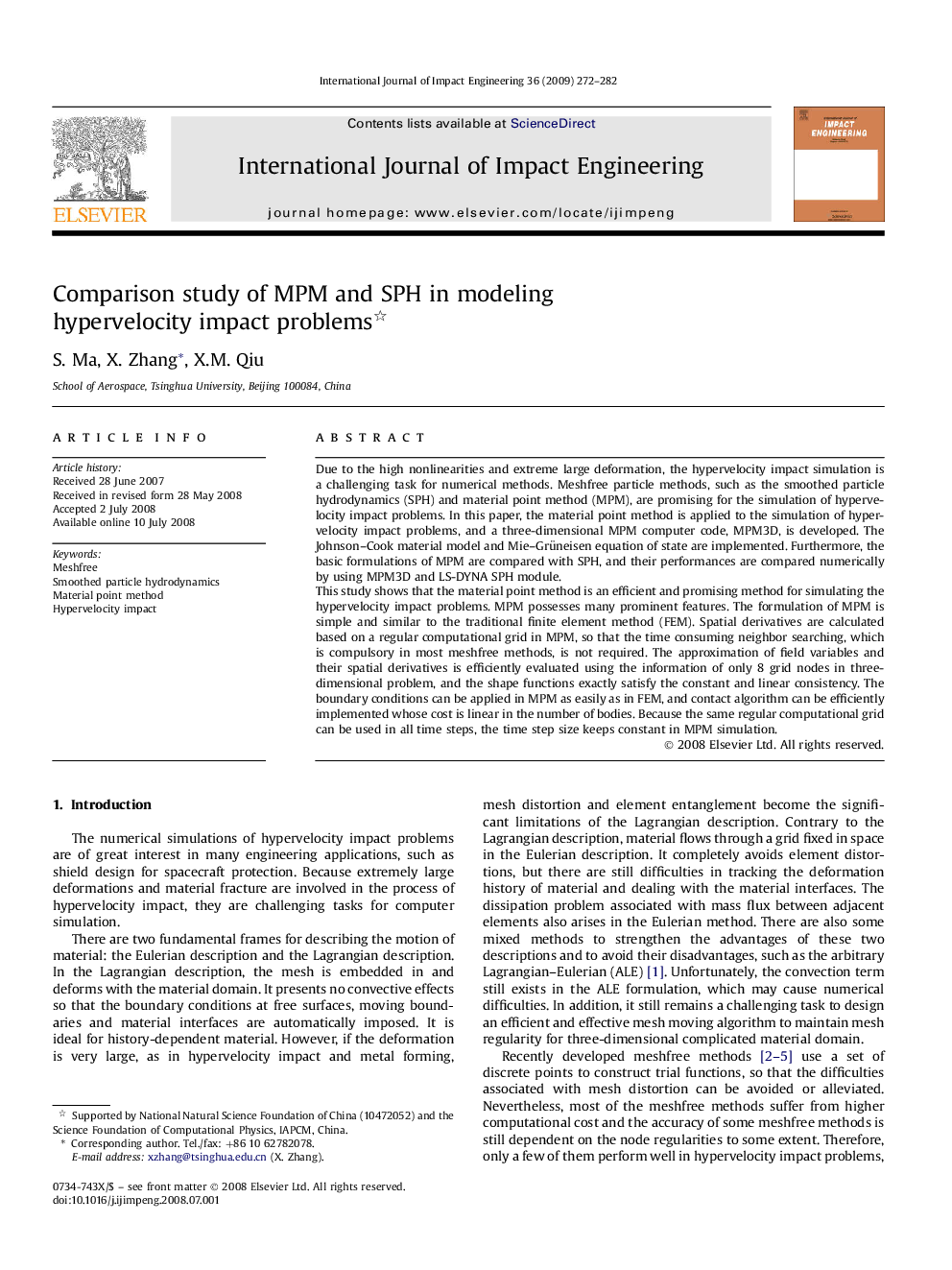| کد مقاله | کد نشریه | سال انتشار | مقاله انگلیسی | نسخه تمام متن |
|---|---|---|---|---|
| 783492 | 1464143 | 2009 | 11 صفحه PDF | دانلود رایگان |

Due to the high nonlinearities and extreme large deformation, the hypervelocity impact simulation is a challenging task for numerical methods. Meshfree particle methods, such as the smoothed particle hydrodynamics (SPH) and material point method (MPM), are promising for the simulation of hypervelocity impact problems. In this paper, the material point method is applied to the simulation of hypervelocity impact problems, and a three-dimensional MPM computer code, MPM3D, is developed. The Johnson–Cook material model and Mie–Grüneisen equation of state are implemented. Furthermore, the basic formulations of MPM are compared with SPH, and their performances are compared numerically by using MPM3D and LS-DYNA SPH module.This study shows that the material point method is an efficient and promising method for simulating the hypervelocity impact problems. MPM possesses many prominent features. The formulation of MPM is simple and similar to the traditional finite element method (FEM). Spatial derivatives are calculated based on a regular computational grid in MPM, so that the time consuming neighbor searching, which is compulsory in most meshfree methods, is not required. The approximation of field variables and their spatial derivatives is efficiently evaluated using the information of only 8 grid nodes in three-dimensional problem, and the shape functions exactly satisfy the constant and linear consistency. The boundary conditions can be applied in MPM as easily as in FEM, and contact algorithm can be efficiently implemented whose cost is linear in the number of bodies. Because the same regular computational grid can be used in all time steps, the time step size keeps constant in MPM simulation.
Journal: International Journal of Impact Engineering - Volume 36, Issue 2, February 2009, Pages 272–282